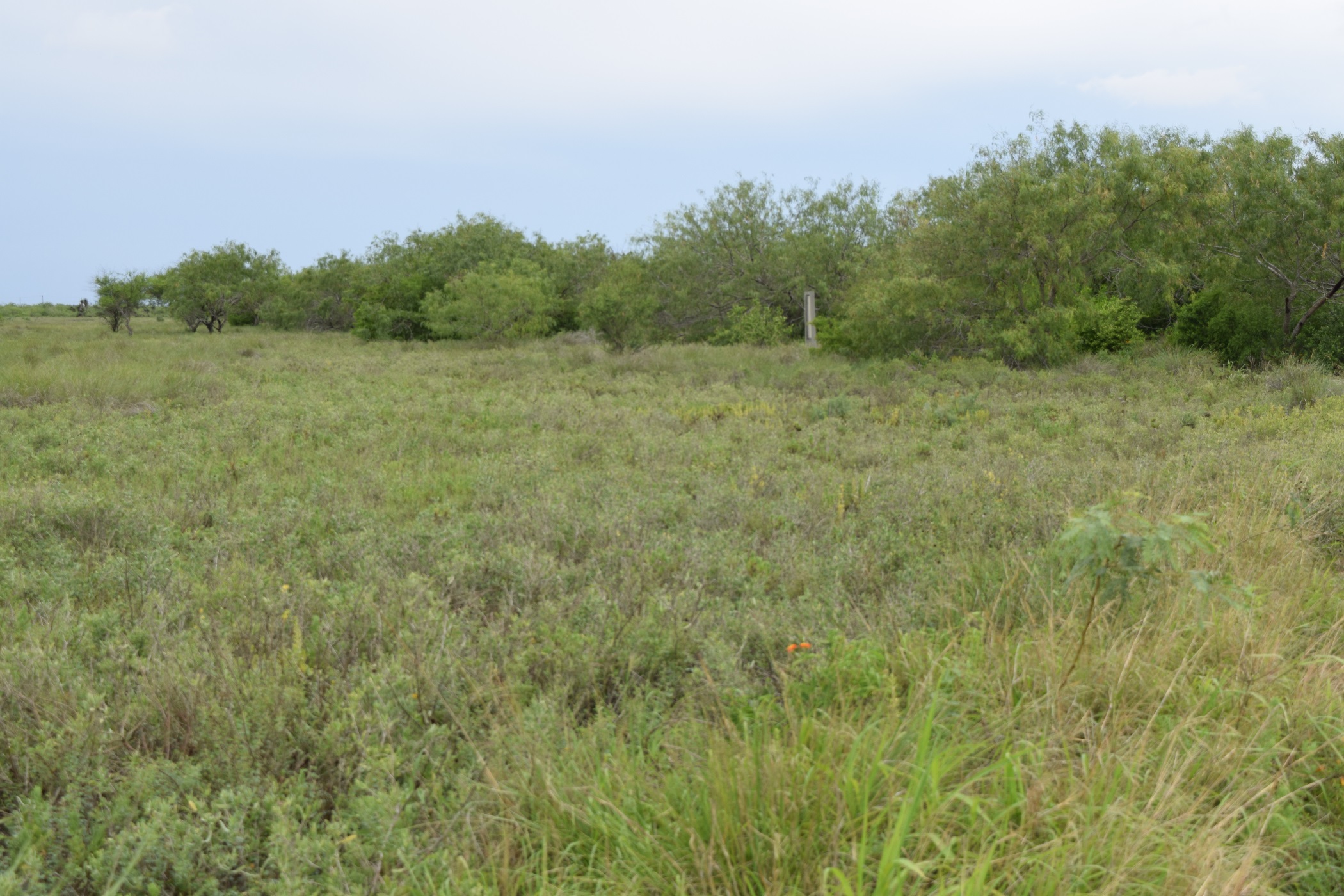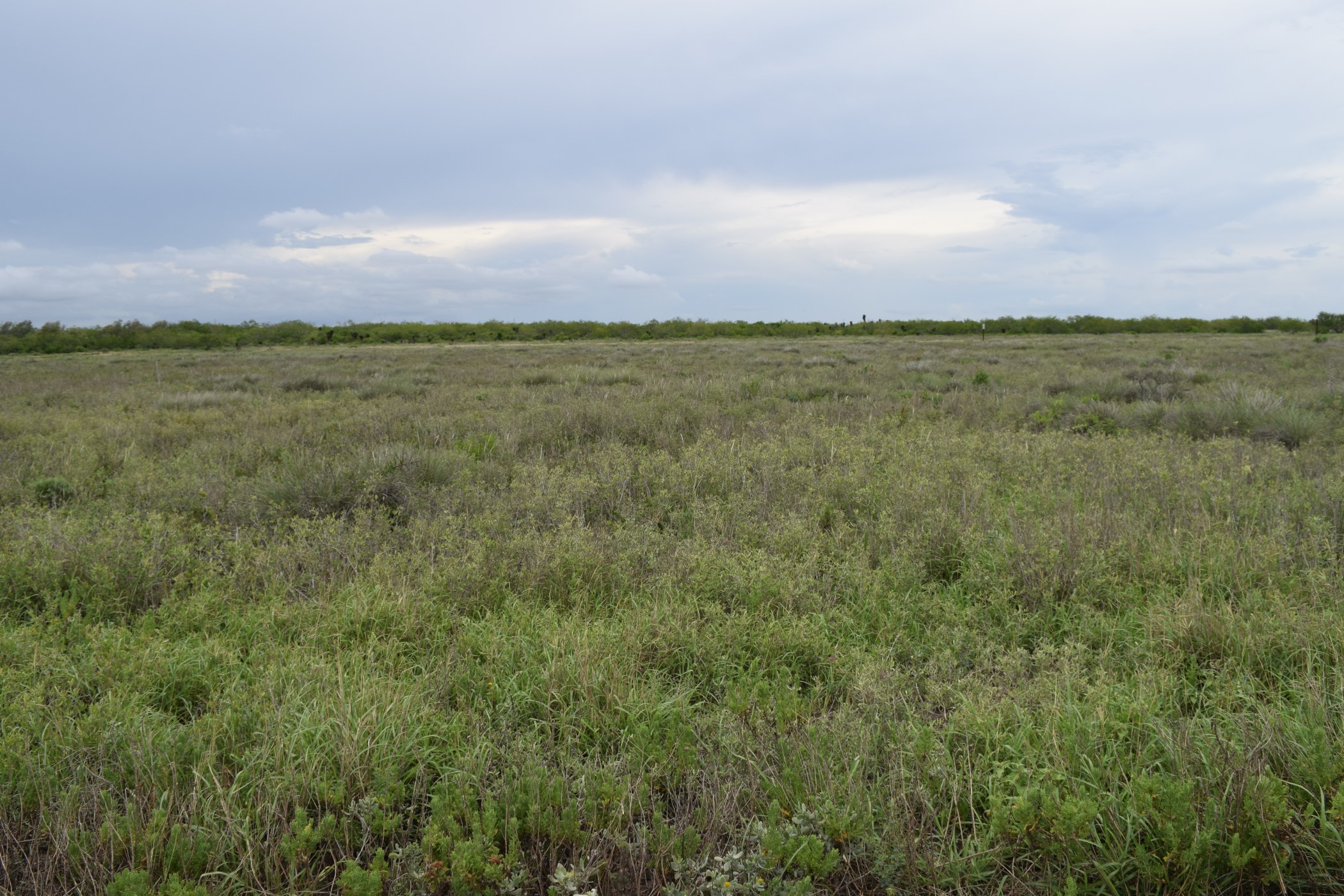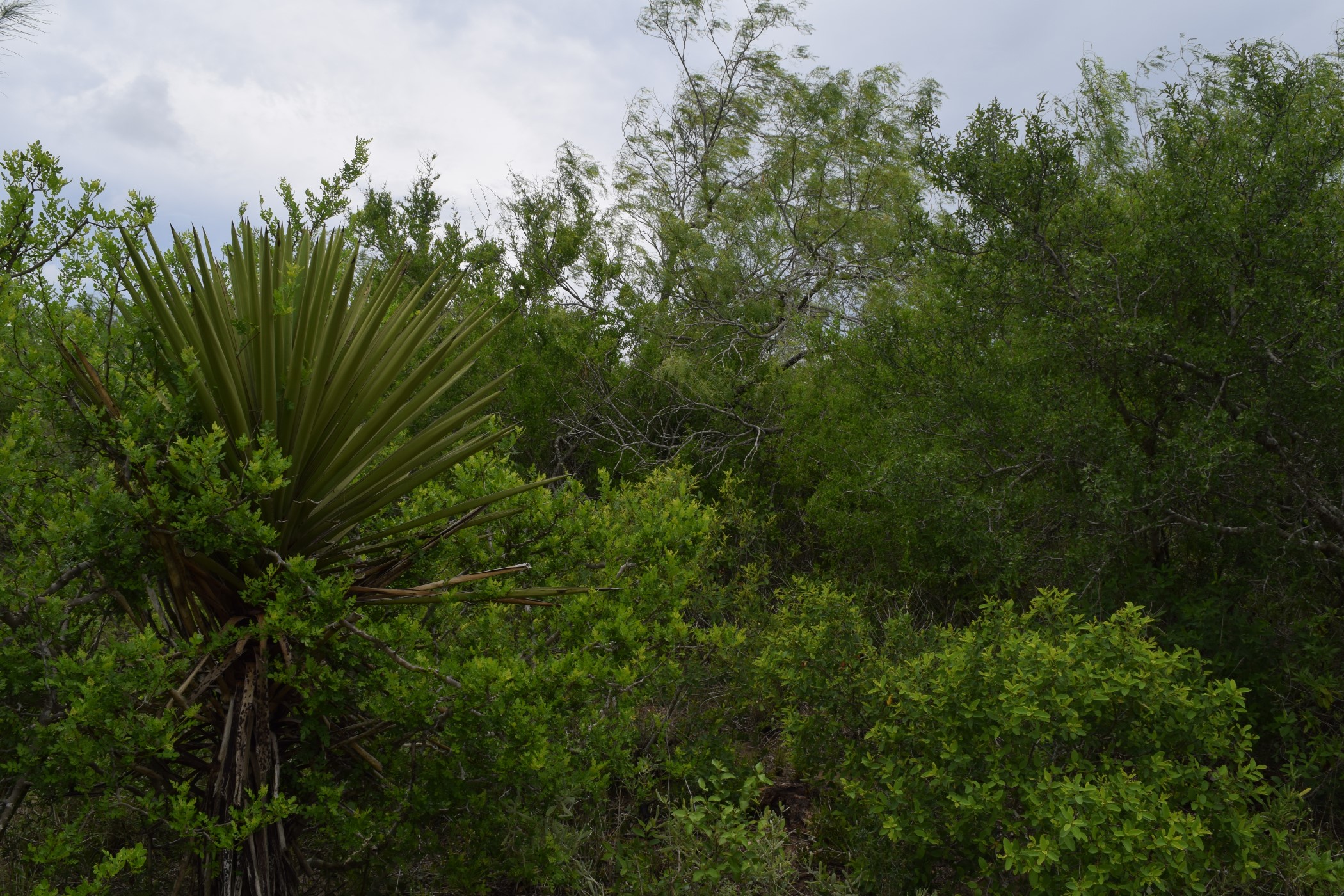
One of the most frequently asked questions is why the battle is called “Palo Alto,” which translates to “Tall Timber.” Although it is difficult to say for certain, the most popular explanation is that if you stand at the battlefield and look around, you wouldn’t be able to see the past the dense surrounding vegetation.
For this reason ranchers that settled the area during the 1800s referenced it as the Prairie of Palo Alto. Naturally, the vast open space offered the ideal battleground for the artillery duel that took place.

However, in order to get a full understanding of the name it’s necessary to consider the geology of the area. The reason behind the abrupt transition is that coastal prairie (Battlefield) is at a lower elevation compared to the chaparral (area surrounding the battlefield). This is due to the Rio Grande river changing course 5000-7000 years ago, leaving behind old meander scars where it used to flow through.
Consequently, the difference in elevation has a direct effect on the type of soil present, which correlates to the type of vegetation that is able to grow. The saline clay soil of the coastal prairie allows salt resistant plants such gulf cord grass and sea oxeye to grow. In turn the chaparral contains less salty soil with better drainage that allow for a more diverse range of plants to grow such as mesquite, Texas Ebony, and Spiny Hackberry.

This dense vegetation, or “tall timber,” encompasses the battlefield and obstructs the surrounding view which is what contributed to the name of the battle.
